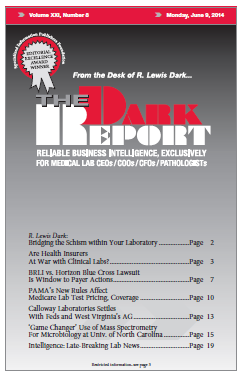CEO SUMMARY: It may sound ridiculous to assert that the nation’s largest health insurers are now “waging war” against clinical labs. However, some very smart people in the profession of laboratory medicine are expressing this opinion. To support such a conclusion, they point to payers’ recent drastic price cuts and network contracting strategies. Moreover, these […]
To access this post, you must purchase The Dark Report.


